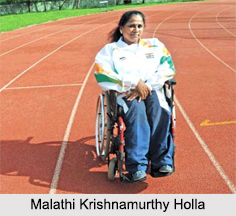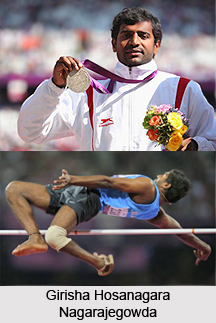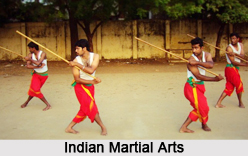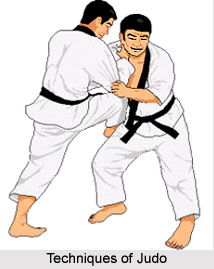 Techniques of Judo can be discussed in a varied manner. There are several techniques that can be vividly discussed for this game. Judo, right from its inception in Japan, has been appreciated by all and sundry! There are varied forms of techniques that have been recognized by Kodokan Judo. And below are some of the names of the techniques involved in Judo! Here are names of throwing techniques (nage-waza) and hand throwing techniques (te-waza).
Techniques of Judo can be discussed in a varied manner. There are several techniques that can be vividly discussed for this game. Judo, right from its inception in Japan, has been appreciated by all and sundry! There are varied forms of techniques that have been recognized by Kodokan Judo. And below are some of the names of the techniques involved in Judo! Here are names of throwing techniques (nage-waza) and hand throwing techniques (te-waza).
* Ippon seoinage: One arm shoulder throw
* Kata guruma: Shoulder wheel
* Kibisu gaeshi: One-hand reversal
* Morote gari: Two-hand reap
* Obi otoshi: Belt drop
* Seoi nage: Lifting shoulder throw or back carry throw
* Seoi otoshi: Kneeling shoulder drop
* Sukui nage: Scoop throw
* Sumi otoshi: Corner drop
* Tai otoshi: Body drop
* Uchi mata sukashi: Inner thigh void throw
* Uki otoshi: Floating drop
* Yama arashi: Mountain storm
* Kouchi gaeshi: Small inner reap reversal
Koshi-Waza: Hip Throwing Techniques
* Daki age: Hugging high lift (Forbidden in competition).
* Hane goshi: Spring hip throw
* Harai goshi: Sweeping hip throw
* Koshi guruma: Hip wheel
* goshi: Full hip throw
* Sode tsurikomi goshi: Sleeve lifting and pulling hip throw
* Tsuri goshi: Lifting hip throw
* Tsurikomi goshi: Lifting and pulling hip throw
* Uki goshi: Floating half-hip throw
* Ushiro goshi: Rear throws
* Utsuri goshi: Hip shift
Unrecognized Techniques
* Tobi goshi: Flying/surfing hip throw
* Ushiro Guruma: Rear wheel
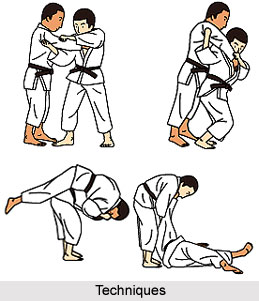 Ashi-Waza: Foot Throwing Techniques
Ashi-Waza: Foot Throwing Techniques
* Ashi guruma: Leg wheel
* Deashi harai: Advanced foot sweep
* Hane goshi gaeshi: Hip spring counter
* Harai goshi gaeshi: Hip sweep counter
* Harai tsurikomi ashi: Lift-pull foot sweep
* Hiza guruma: Knee wheel
* Kosoto gake: Small outer hook
* Kosoto gari: Small outer reap
* Kouchi gari: Small inner reap
* guruma: Large wheel
* Okuri ashi harai: Foot sweep
* Osoto gaeshi: Big outer reap counter
* Osoto gari: Big outer reap
* Osoto guruma: Big outer wheel
* Osoto otoshi: Big outer drop
* Ouchi gaeshi: Big inner reap counter
* Ouchi gari: Big inner reap
* Sasae tsurikomi ashi: Propping and drawing ankle throw
* Tsubame gaeshi: Swallow counter
* Uchi mata: Inner-thigh
* Uchi mata gaeshi: Inner-thigh counter
Sutemi-Waza: Sacrifice Techniques
Ma-Sutemi: Rear Sacrifices
* Hikikomi gaeshi: Pulling in reversal
* Sumi gaeshi: Corner reversal
* Tawara gaeshi: Rice bag reversal throw
* Tomoe nage: Circle throw
* Ura nage: Rear throw
Yoko-Sutemi: Side Sacrifices
* Daki wakare: High separation
* Hane makikomi: Springing wraparound
* Harai makikomi: Hip sweep wraparound
* Kani basami: Crab or scissors throw. (Forbidden in competition)
* Kawazu gake: One-leg entanglement. (Forbidden in competition)
* Osoto makikomi: Big outer wraparound
* Soto makikomi: Outer wraparound
* Tani otoshi: Valley drop
* Uchi makikomi: Inner wraparound
* Uchi mata makikomi: Inner thigh wraparound
* Uki waza: Floating drop
* Yoko gake: Side prop
* Yoko guruma: Side wheel
* Yoko otoshi: Side drop
* Yoko wakare: Side separation
Unrecognized Techniques
* Tama guruma: Jade wheel
* Ude gaeshi: Arm reversal
* Yoko Tomoe Nage: Side circle throw
Katame-Waza: Grappling Techniques
* Turtle turnovers
* Daki Wakare
Unrecognized Techniques
Guard Sweeps:
* Elevator Sweep
* Push Sweep
Guard Passes:
* Near knee guard pass
* Simple guard pass
* Stacking guard pass
Turtle turnovers:
* Turtle Flip Over
* Ura-gatame
Back mount:
* Back Mount Escape
* Foot lock counter to rear-mounted position
Osaekomi-Waza: Pins Or Matholds
* Kami-shiho-gatame: Upper four quarter hold down
* Kata-gatame: Shoulder hold
* Kesa-gatame: Scarf hold
* Kuzure-kami-shiho-gatame: Broken upper four quarter hold down
* Kuzure-kesa-gatame: Broken scarf hold
* Tate-shiho-gatame: Vertical four quarter hold
* Yoko-shiho-gatame: Side four quarter hold
Unrecognized Techniques
* Uki-gatame: Floating hold
* Ura-gatame
* Ura-kesa-gatame
* Ushiro-kesa-gatame: Reverse Scarf Hold. The Kodokan officially also refers to this technique as kuzure-kesa-gatame.
* Sangaku-Gatame: Triangular Hold
Shime-Waza: Chokes Or Strangles
* Do-jime: Trunk strangle.
* Gyaku Juji-jime: Reverse cross strangle
* Hadaka-jime: Naked strangle
* Kata-ha-jime: Single wing strangle
* Kata-juji-jime: Half cross strangle
* Kata-te-jime: One-hand strangle
* Nami-juji-jime: Normal cross strangle
* Okuri-eri-jime: Sliding lapel strangle
* Ryo-te-jime: Two-hand strangle
* Sankaku-jime: Triangular strangle, triangle choke
* Sode-guruma-jime: Sleeve wheel strangle (Eziquiel/Ezekiel choke)
* Tsukkomi-jime: Thrust choke
Unrecognized Techniques
* Jigoku-jime: Hell strangle
* Ura-juji-jime
Kansetsu-Waza: Joint Locks
* Ashi-garami: Leg entanglement. (Forbidden in competition)
* Ude-garami: Arm entanglement or "figure-four" key lock
* Ude-hishigi-ashi-gatame: Side-lying arm bar
* Ude-hishigi-hara-gatame: Side-extended arm bar, lower stomach against opponent`s elbow.
* Ude-hishigi-hiza-gatame: Knee arm bar.
* Ude-hishigi-juji-gatame: Back-lying perpendicular arm bar.
* Ude-hishigi-sankaku-gatame: Triangular strangle, using the legs.
* Ude-hishigi-te-gatame:
* Ude-hishigi-ude-gatame:
* Ude-hishigi-waki-gatame:
Unrecognized Techniques
* Ashi-hishigi
* Sankaku-garami: Triangular entanglement
Atemi-Waza: Body-Striking Techniques
Although taught within kata and sometimes used within informal randori, striking techniques are forbidden in standard judo competitions.
Ashi-Ate-Waza: Leg Striking Techniques
* Mae-ate: Front knee
* Mae-geri: Front kick
* Naname-geri: Front crossing kick
* Taka-geri: High front kick
* Ushiro-geri: Backward kick
* Yoko-geri: Side kick
Ude-Ate-Waza: Arm Striking Techniques
* Empi-uchi: Elbow blow
* Kami-ate: Upward blow
* Kirioroshi: Downward knife hand blow
* Naname-ate: Front crossing blow
* Naname-uchi: Slanting knife hand blow
* Ryogan-tsuki: Strike both eyes with fingertips
* Shimo-tsuki: Downward blow
* Tsukiage: Uppercut
* Tsukidashi: Stomach punch with fingertips
* Tsukkake: Straight punch
* Uchioroshi: Downward strike
* Ushiro-ate: Rear elbow strike
* Ushiro-sumi-tsuki: Rear corner blow
* Ushiro-tsuki: Rear blow
* Ushiro-uchi: Rear blow
* Yoko-ate: Side blow
* Yoko-uchi: Side blow
Uke-Waza (Blocks And Parries)
* Tenkan: Outside turning
Ukemi (Receiving Techniques Or Break-Fall Techniques)
* Zempo Kaiten: Forward roll
* Mae ukemi: Forward break-fall
* Ushiro ukemi: Backward break-fall
* Yoko ukemi: Sideways break-fall





